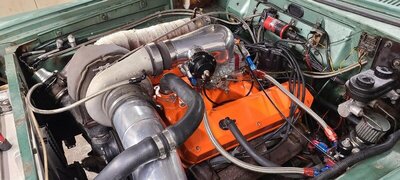Paul Secoy
Well-Known Member
Hello all.. I am very near wrapping up my latest build, a turbo 400 low deck engine, and I am already wondering how far I can honestly push my luck.
I have read and learned from friends that turbo builds pretty regularly produce higher numbers at a safe and repeatable level than most power adders, but its all speculation at this point.
Anyways, I'd love to hear from, or be pointed towards anyone with some real world experience that I can draw from regarding turbo charged Mopar low deck big blocks.
Thanks in advance guys, much appreciated!
I have read and learned from friends that turbo builds pretty regularly produce higher numbers at a safe and repeatable level than most power adders, but its all speculation at this point.
Anyways, I'd love to hear from, or be pointed towards anyone with some real world experience that I can draw from regarding turbo charged Mopar low deck big blocks.
Thanks in advance guys, much appreciated!
















